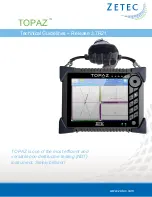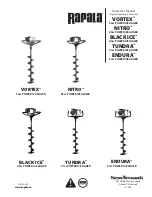
where there is an occasional stepwise change in the phase angle of the load, the
regulating error can be suppressed with the logic. This kind of stepwise change can
occur, for example, when a capacitor bank is switched on to compensate a reactive
power flow.
Another possibility is to use an automatic setting group change between setting
groups in different loading situations. The setting groups then have different set
values for the load phase angle.
Minimizing Circulating Current principle MCC
The MCC principle is an optimal solution for controlling the parallel transformers of
different ratings or step voltages in substations with varying reactive loads. Since
this control scheme allows the exchange of data between regulators, the circulating
current can be calculated more accurately than with other schemes. However, a
maximum of four regulators can be connected in parallel. To start the parallel
operation, the acting operation mode parameter has to be set to "MCC" for all the
regulators of the connection. Furthermore, the signal
CON_STATUS
must indicate
that the transformers are connected to the network. A unit that is minimizing the
circulating current must have the acting operation mode set to "MCC". However,
units that have the acting operation mode set to "Manual" do not perform any
circulating current minimization operations themselves.
2 x Ici
I
TR1
x sin(φ
1
)
I
TR2
x sin(φ
2
)
φ
1
φ
2
U_A
Ici = circulating current
I
TR1
I
TR2
Figure 562: The circulating current between two parallel transformers
In this case, the circulating current can be calculated with the equation
I
I
I
ci
TR
TR
=
⋅
−
⋅
(sin
sin
)
φ
φ
1
1
2
2
2
(Equation 189)
I
TR1
Average primary value of the currents I_A, I_B and I_C measured by regulator 1
I
TR2
Average primary value of the currents I_A, I_B and I_C measured by regulator 2
φ
1
Phase angle between U_A and I_A in regulator 1
φ
2
Phase angle between U_A and I_A in regulator 2
Control functions
1MRS757644 H
1058
620 series
Technical Manual
















































